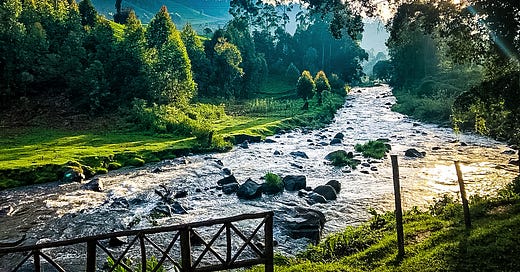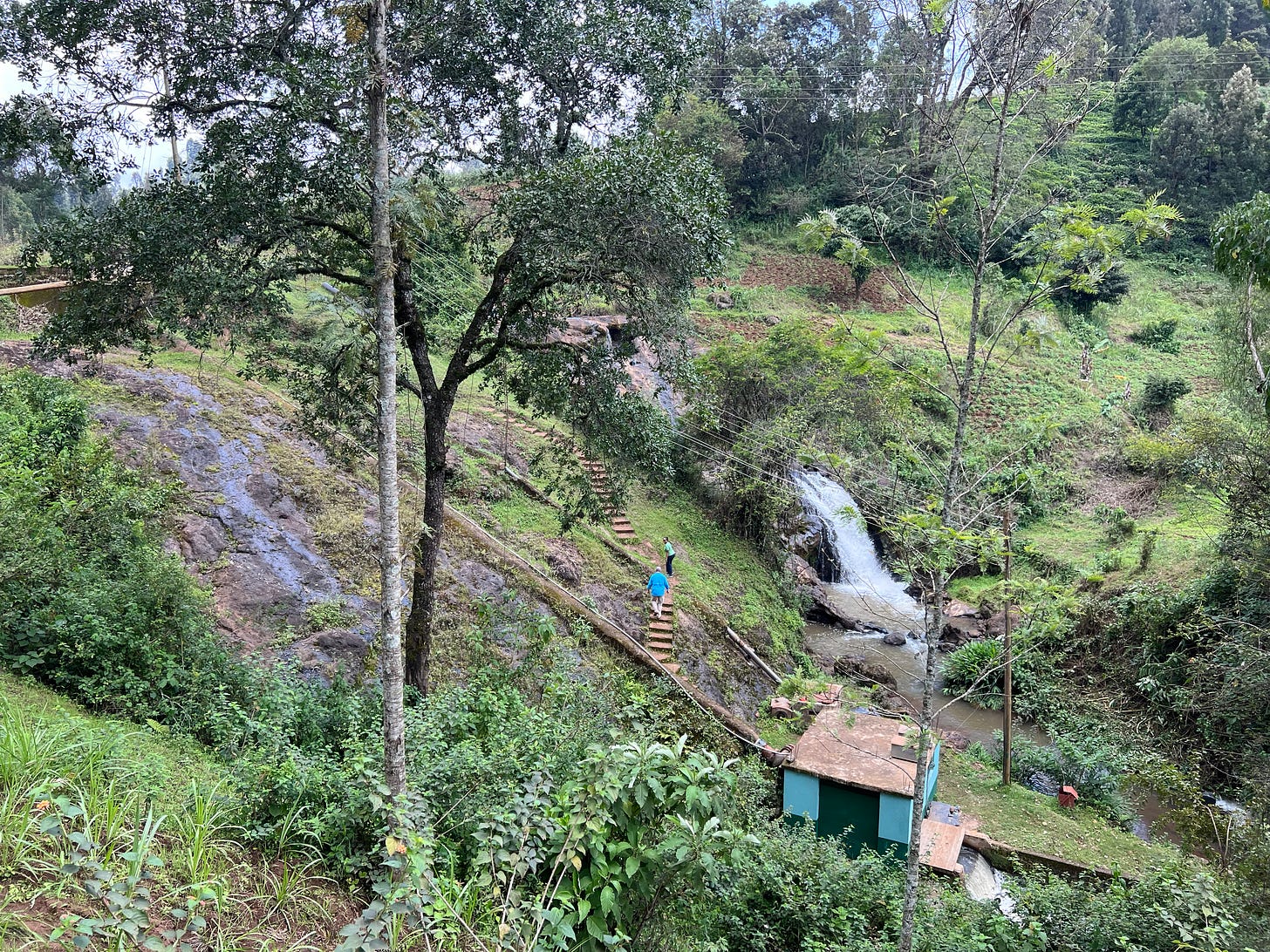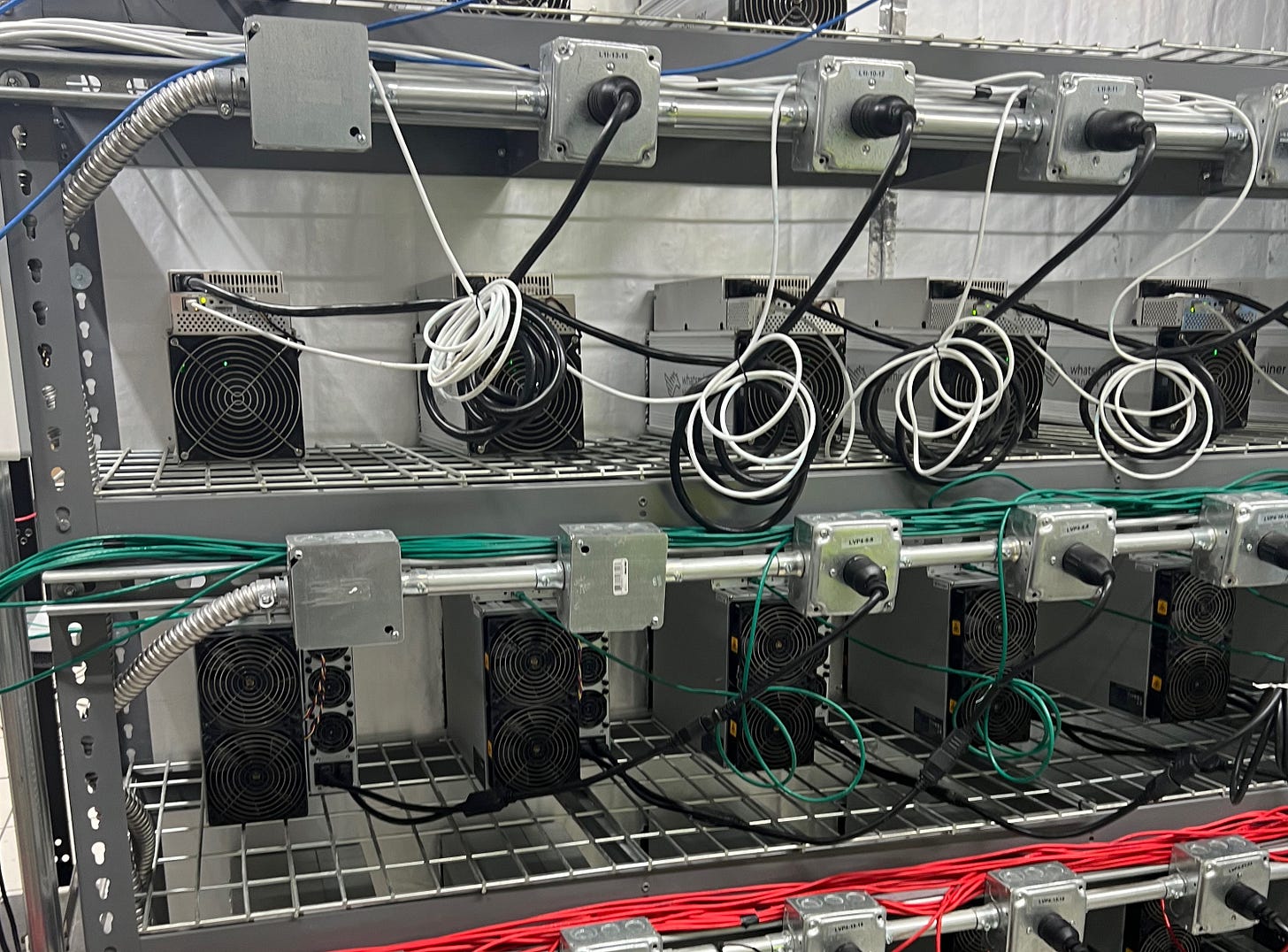21st Century Villages
Small-scale, distributed Bitcoin mining as an economic enabler for renewable energy in rural Africa
I have some cottages near the edge of the Aberdare Mountain Range in Kenya. It’s a peaceful place of tea growing, sparkling rivers full of rainbow trout, and a nice quiet place to read a book over the weekend. It’s also quite rural with farmers, old dirt roads, and unreliable electricity. In other words: a quaint escape for me, but a hard place to feel like you’re part of the global economy if you live there day-to-day.
If you catch me on-stage somewhere, you’ll often hear me say something pithy like, “You cannot have a 21st Century economy without power and connectivity.”
The 21st century is defined by the internet, and you cannot be a part of that world unless you have power for your devices and the ability to connect to it. Which means that electricity and connectivity are your foundation, and everything else, whether education, government services, business, healthcare, or finance are pillars on top of those two layers.
The value of a connected economy is no longer disputed in established markets. Populations in first-world markets enjoy a significant advantage in their ability to engage in 21st century economic activities by virtue of their relatively cheap, nearly ubiquitous, always-on access to power and internet. Conversely, emerging markets continue to rely on more traditional economies with a heavy dependence on physical interactions for the commerce and movement of goods and services.
When power does exist (generally in more populated locations) it is prohibitively expensive for the majority of consumers to maintain perpetual connections. Without the ability for average consumers to have affordable access to engage in network economic activities, the emerging markets do not actively benefit from educational, financial, e-government, and other valuable digital services on a regular basis; they continue to lag behind their more developed peers in the 21st century global economy.
Energy Mini-Grids as a Sustainable Business
It turns out that there’s a lot of rain in the Aberdares, and a lot of rivers in these valleys of ours that make excellent locations for small-scale hydroelectric projects. I started having conversations with the different people and organizations building mini-grids across Kenya, and especially the ones building small-scale, run-of-river hydro in my own backyard.
With the loosening by the regulatory environment by the Kenyan government for projects under 1MW in recent years, there has been an increase in new mini-grid energy projects all over the country, including solar, wind, geothermal, and hydro. In fact, renewable energy is so abundant in Kenya, that even if you take your energy from the normal grid you’re automatically getting 95% renewable energy in your mix.
According to the Alliance for Rural Electrification, there are over 600 million people in sub-saharan Africa without access to electricity. The key approach for meeting this energy requirement will be the development of distributed generation and mini-grids.
Kenya, and Africa in general, have some of the best untapped renewable energy capacity. A multitude of efforts have been made to create distributed renewable energy grids to bring power to underserved communities but these efforts often struggle because of the supply/demand imbalance and the associated costs of creating sufficient capacity for peak demand. While in theory the unit economics for rural small power generation make sense, in practice the necessary scale for financial sustainability is much greater than the initial consumer demand within these communities.
In short, it takes a few years for households to grow from getting electricity, to buying the refrigerators, TVs, and other appliances that use up more energy. The scale-up isn’t quick, which means that you need another buyer of that energy in the interim, or the cost to generate that power are going to be too high for that community to pay for as well, thereby slowing down the uptake even further.
One mechanism for achieving the necessary energy production scale to make the economics of standalone grids work is to co-locate industries in proximity to the generation that can provide a reliable baseload on the grid. The challenge becomes finding industries that are 1) large scale energy consumers, 2) flexible to the variable supply of renewable energy production, and 3) able to be located in any geographic condition.
Bitcoin Mining as a Responsive Baseload
Bitcoin miners are small, dedicated computers with specialized chips. Bitcoin mining is the process of creating new bitcoin by solving puzzles. The first Bitcoin miner to solve the puzzle is rewarded with Bitcoin. The mining process also confirms transactions on the cryptocurrency's network and makes them trustworthy.
Bitcoin mining provides a productive use of the excess energy that is always available as a responsive baseload (a flexible buyer of last resort). Mining operations effectively provide a price floor for standalone electricity grids making it easier for grid operators to plan, which ultimately increases operational and market efficiency. All of this together means that standalone grids can be operated at sufficient scale to ensure financial sustainability while providing electricity services to communities that otherwise would not have access to reliable power.
Bitcoin mining is unique as an industry in that the effort of computing an algorithmic solution (hashing) can be turned on and off near-instantaneously and at a granular rate. The effort of calculating hashes (as measured in hashes per second) is rewarded as units of hashing effort over time. If only 60% of a miner’s electricity demand is available for a period of 2 hours then the operator can shut down all but 60% of its mining machines for the 2 hours. And, unlike other critical cloud computing services (e.g. AWS, cloud storage), there are no end customers relying on maintaining uptime of a specific server instance. Hashrate can be scaled up and down easily, so mining operators can continually startup and shutdown miners to match the supply of available electricity.
Since Bitcoin mining can provide an industrial consumer for a power project to rely on as an anchor customer, the energy producer can more efficiently build additional capacity to make affordable power available to the broader community for use. Its purpose is to provide for, and drive down the tariff of, the electricity provided to community sites such as schools or clinics. While local schools and clinics are connected to reliable energy for the first time, this project also works with local entrepreneurs to distribute affordable power to local homes.
Final Thoughts
No one wants power just to have it, they want to do something with it, such as charge their phone, watch TV, or keep food for longer with a refrigerator. The world is on the cusp of an energy revolution as we enter the digital age. In emerging markets there is a case for bringing mini-grids and smaller grids, so that communities are served better and at a price-point which they can pay.
Finally, for the Bitcoin community, this model serves as a welcome decentralization of the overly centralized mega-site Bitcoin mining that goes on today. Not only does it move some hashing power to Africa (which is woefully underrepresented), but it also further distributes hashing to smaller sites. Putting six mining machines to work using 20kW on a 100kW site is financially workable for a mini-grid, as does putting a container load of miners using 600kW on a 1MW site.
In short, this changes the game completely for Africa’s energy demands in rural areas.
(Note: There’s a further piece that needs to be written on the business models for energy generation companies to finance and build their projects. Being new to a space often gives you the ability to see things a bit different, and I can’t help but think that the 20 year PPA model isn’t required for the mini-grid business.)







